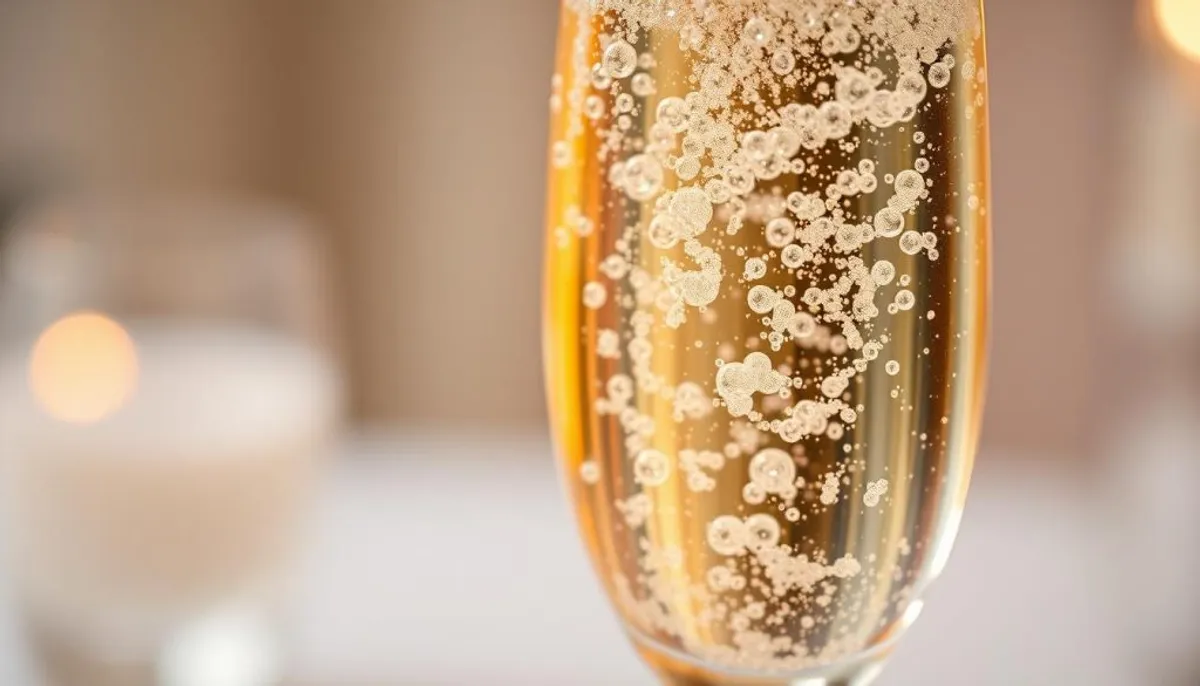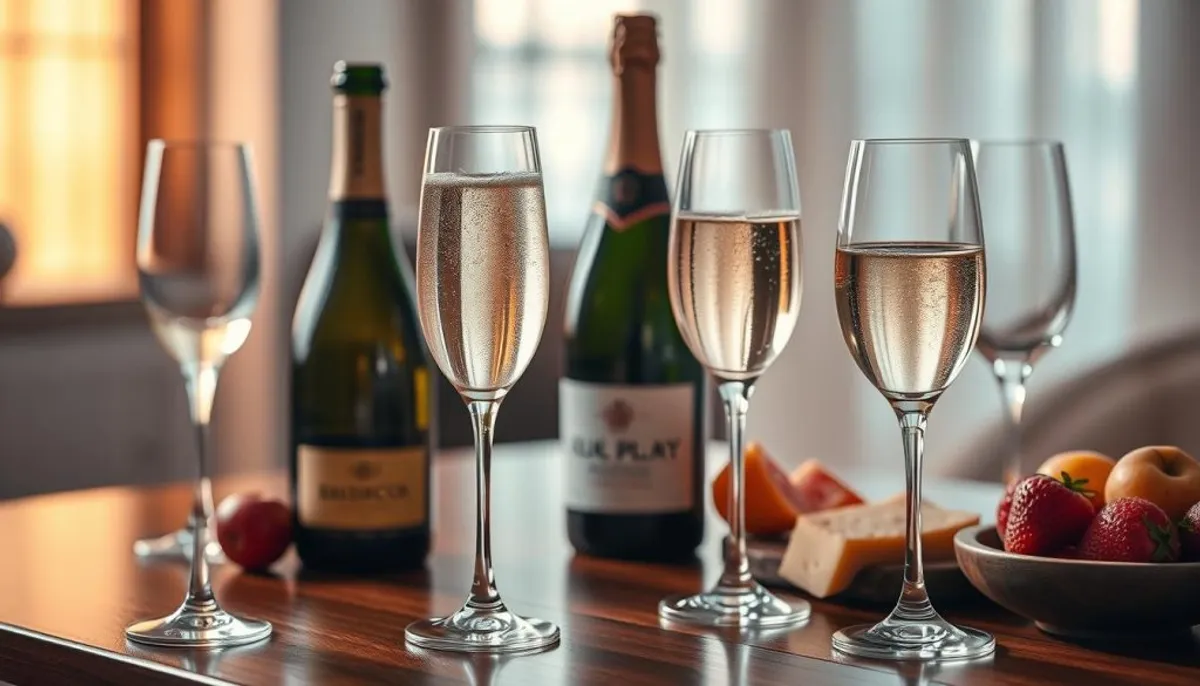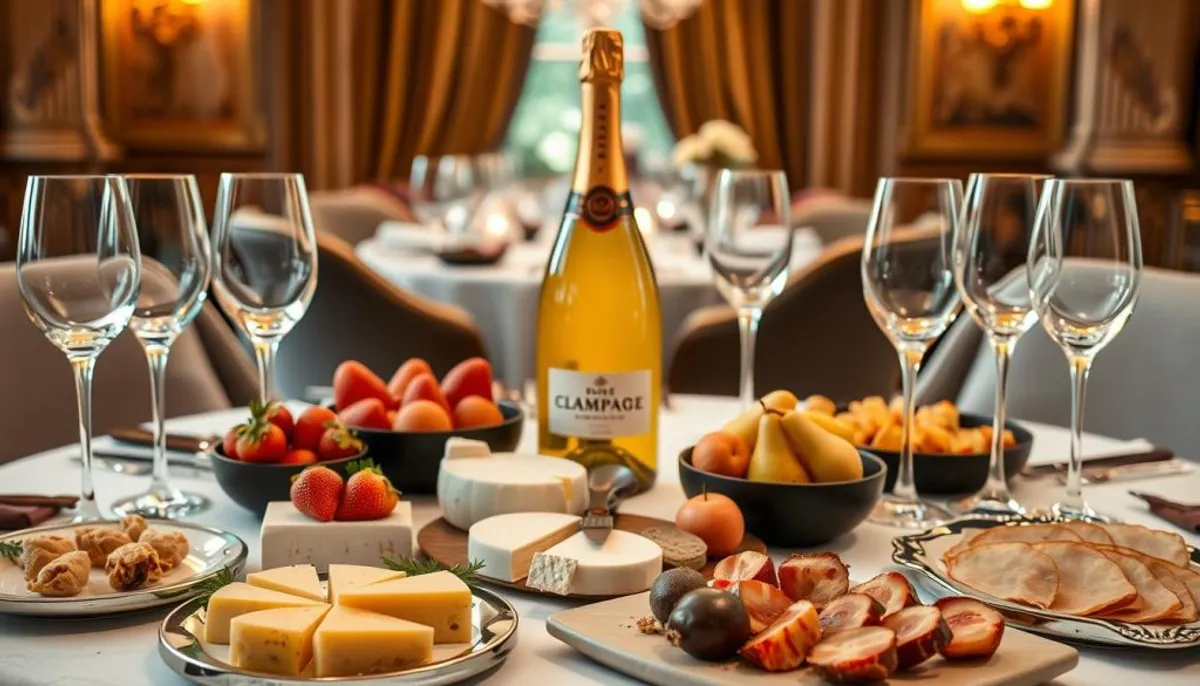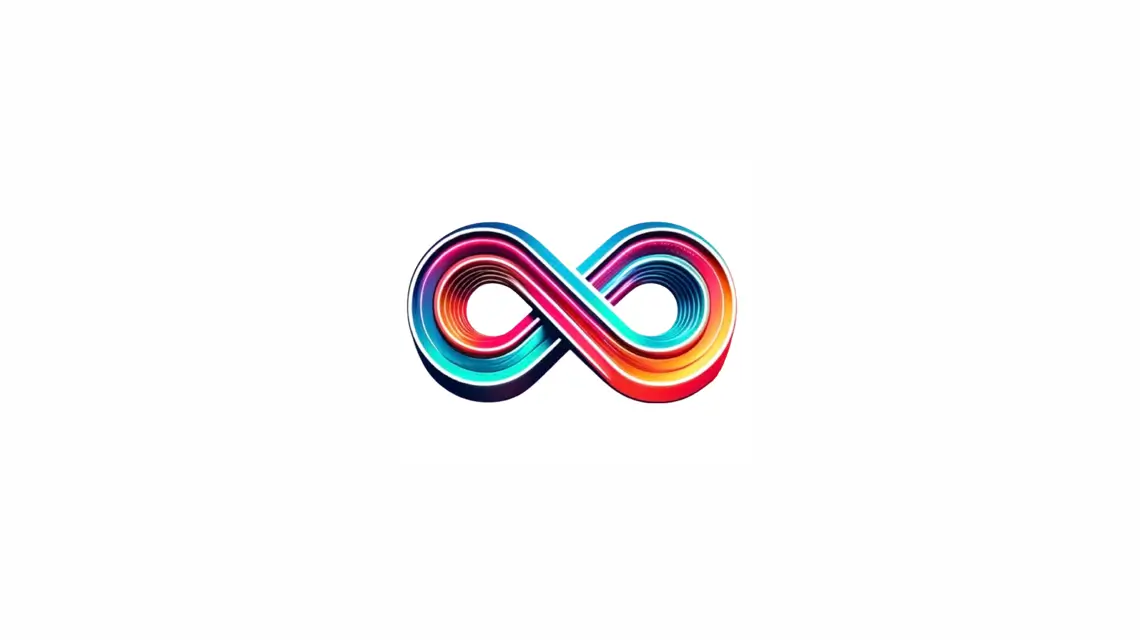Imagine the sound of a cork popping, the effervescence of bubbles, and the harmonious clinking of glasses. White Champagne, the epitome of sparkling wines, has been the quintessential celebratory drink for centuries. This guide embarks on a journey through the effervescent realm of this luxurious beverage, originating from France’s Champagne region.
Created via the méthode champenoise, white Champagne transcends mere consumption—it embodies an experience. Its crisp flavor profile and rich historical tapestry have solidified its status as the preferred choice for commemorating life’s milestones.

Whether you’re a seasoned Champagne aficionado or a novice eager to explore, this guide serves as your compass. We’ll dissect the intricacies of production techniques and food pairings, arming you with the knowledge to select the ideal bottle for any celebration.
Key Takeaways
- White Champagne is exclusively produced in France’s Champagne region
- The méthode champenoise is crucial to Champagne’s unique character
- Champagne pairs well with a variety of foods, from oysters to popcorn
- Different sweetness levels cater to various palates
- Proper serving and storage enhance the Champagne experience
- Notable Champagne houses offer distinct styles and flavors
Understanding Champagne’s Noble Heritage
Champagne’s storied past and distinctive production techniques have solidified its status as a luxury icon. The Champagne region, segmented into five primary areas, showcases a varied terroir. This diversity is pivotal in shaping the wine’s unique essence.
The Protected Designation of Origin
Champagne’s esteemed status as a Protected Destination of Origin (PDO) is a testament to its exclusivity. This designation guarantees that only wines produced within the Champagne region can be labeled as such. The five main areas within the region each contribute to the wine’s rich tapestry of flavors and aromas.
- Montagne de Reims: Covers 10,000 hectares of vineyards
- Vallée de la Marne: Known for its varied terroir
- Côte des Blancs: Home to prestigious Grand Cru villages
- Côte de Sézanne: Chardonnay accounts for 75% of production
- Aube (Côte des Bar): Features soil similar to Chablis and Sancerre
Traditional Production Methods
The traditional method, or méthode champenoise, is fundamental to Champagne’s distinctiveness. This method entails a double fermentation, resulting in the wine’s characteristic effervescence and intricate flavor profile. By the 18th century, Champagne winemakers had perfected both still and sparkling wine production.
Historical Significance in Wine Culture
Champagne’s history is a narrative of adversity and achievement. The period from 1614 to 1659 was marred by uprisings, plundering, and conflict. Yet, the wine industry flourished. By the early 18th century, sparkling Champagne had captured the hearts of royalty and the affluent in Paris and London.
| Year | Event |
|---|---|
| 1614-1616 | Uprisings in eastern Champagne |
| 1651 | Brigands attack Marne Valley |
| 1652 | Mercenaries plunder Champagne |
| 1659 | Peace of the Pyrenees brings relief |
| Early 18th century | Sparkling Champagne gains popularity |
The Art of White Champagne Production
White Champagne production is a symphony of tradition and precision, deeply rooted in the local wine culture. It commences with the meticulous selection of grapes, focusing on Chardonnay, Pinot Noir, and Pinot Meunier. Producers such as Champagne Roger Constant-Lemaire in Villers-sous-Châtillon employ hand-picking. This ensures only the most ripe grapes are chosen.
The Méthode Champenoise Process
The méthode champenoise is the quintessence of Champagne creation. It commences with primary fermentation, followed by the intricate assemblage process. This step merges still white wines with reserve wines, typically initiated about 5 months post-harvest. The essence of secondary fermentation in the bottle is where the iconic bubbles are crafted.
Primary Grape Varieties Used
Chardonnay, Pinot Noir, and Pinot Meunier are the foundational grapes of white Champagne. Each grape contributes distinct characteristics:
- Chardonnay: Adds finesse and elegance
- Pinot Noir: Provides body and structure
- Pinot Meunier: Contributes fruitiness and roundness
Some producers, like Champagne Alfred Gratien in Epernay, employ barrel fermentation. This adds a layer of complexity to the wine.
Fermentation and Aging Requirements
Post-secondary fermentation, premium white Champagne undergoes aging for five years or more. This aging on lees imparts a toasty, yeasty flavor. The process concludes with riddling and disgorgement, techniques honed over centuries. The final step is the dosage, which determines the Champagne’s sweetness level, ranging from Brut Nature to Doux.
Champagne vs Other Sparkling Wines
Champagne distinguishes itself among sparkling wines with its esteemed reputation and distinctive production techniques. Though alternatives like Prosecco, Cava, and Crémant present delightful options, Champagne is the pinnacle for many connoisseurs. For those looking to elevate their brunch experience, selecting the best bubbly for mimosas can make all the difference.
Prosecco, originating from Italy, employs the Charmat method. This method generates larger bubbles and a fruitier taste. Primarily crafted from Glera grapes, Prosecco is a refreshing, more budget-friendly choice for those who appreciate sparkling wines.
Spanish Cava mirrors Champagne in its production approach, utilizing the traditional method for secondary fermentation in the bottle. Yet, Cava employs distinct grape varieties, yielding a distinct flavor that many find comparable to Champagne.
Crémant, a French sparkling wine produced outside Champagne, adheres to similar production techniques. It presents a high-quality, cost-effective option, with varieties from regions like Alsace gaining traction among wine aficionados.

| Sparkling Wine | Origin | Main Grapes | Production Method |
|---|---|---|---|
| Champagne | Champagne, France | Chardonnay, Pinot Noir, Pinot Meunier | Traditional Method |
| Prosecco | Italy | Glera | Charmat Method |
| Cava | Spain | Macabeu, Parellada, Xarel·lo | Traditional Method |
| Crémant | Various French regions | Varies by region | Traditional Method |
This comparison underscores the varied landscape of sparkling wines. Each offers distinct qualities, yet Champagne’s rigorous standards and centuries-long heritage solidify its status as a premium wine.
Decoding Champagne Sweetness Levels
Champagne presents a spectrum of sweetness, from the dryness of Brut Nature to the lusciousness of Doux. Understanding the champagne sweetness levels and grasping the sweetness scale is crucial for selecting the ideal champagne that aligns with your palate.
Brut Nature to Doux Scale
The spectrum of Champagne sweetness spans from Brut Nature to Doux. Brut Nature, with its 0-3 grams of sugar per liter, stands at the dry end. Doux, on the other hand, boasts over 50 grams of sugar. In between, you’ll encounter Extra Brut, Brut, Extra Dry, Sec, and Demi-Sec, each offering a unique taste experience.
| Sweetness Level | Sugar Content (g/L) |
|---|---|
| Brut Nature | 0-3 |
| Extra Brut | 0-6 |
| Brut | 0-12 |
| Extra Dry | 12-17 |
| Sec | 17-32 |
| Demi-Sec | 32-50 |
| Doux | 50+ |
Sugar Content and Dosage
The dosage process is pivotal in determining Champagne’s final sweetness. Winemakers blend wine with sugar to achieve the perfect balance between acidity and sweetness. The dosage amount significantly influences the taste of the final product.
Choosing the Right Sweetness for Your Palate
Your taste preferences and the event’s nature dictate your choice of Champagne sweetness. Brut and Extra Brut are ideal for those who prefer a crisp, dry taste, making them perfect for aperitifs. For those who enjoy a hint of sweetness, Extra Dry and Sec are excellent choices, complementing light desserts. On the other hand, Demi-Sec and Doux Champagnes are best paired with rich desserts and fruits. Exploring different levels can help you discover your preferred champagne.
Serving and Storage Essentials
Mastering the art of serving and storing Champagne enhances your drinking experience. The ideal serving temperature for Champagne ranges from 47°F to 50°F. This ensures optimal taste and effervescence. For short-term storage, maintain a temperature of 8-10°C. Long-term storage requires a temperature of 10-13°C.
Choosing the right glassware is crucial. Champagne flutes or white wine glasses are ideal. They preserve bubbles and enhance aromas. Always hold your glass by the stem to prevent warming the wine with your hand.
Proper storage conditions are essential for maintaining Champagne quality, including understanding the various champagne sweetness levels. Store bottles in a cool, dark place with 60-70% humidity. For short-term storage, keep bottles upright. For long-term aging, lay them sideways.
| Storage Type | Temperature | Position | Duration |
|---|---|---|---|
| Short-term | 8-10°C | Upright | 3-4 years (non-vintage) |
| Long-term | 10-13°C | Sideways | 5-10 years (vintage) |
To open your Champagne, chill it to 7-9°C and ease out the cork gently. Pour slowly along the glass side at a slight angle to preserve bubbles. Once opened, Champagne retains its freshness for 3 to 5 days if properly stored.
Food Pairing with White Champagne
White Champagne’s versatility is evident in its ability to pair with a variety of dishes. Its crisp acidity and effervescence enhance flavors, making it ideal for any event. Exploring Champagne food pairing options can elevate your dining experience.
Classic Pairing Combinations
Champagne pairs exquisitely with seafood. Oysters and caviar, with their luxurious textures, contrast beautifully with the wine’s bubbles. For a more casual option, consider pairing with sushi or grilled shrimp. The acidity of the wine cuts through rich flavors, refreshing your palate.

Appetizers and Main Course Recommendations
Appetizers such as cheese platters, featuring Brie, Cheddar, or Gouda, pair well with Champagne. Stuffed mushrooms and almonds also make excellent starters. For main courses, Champagne complements a variety of dishes. It pairs well with grilled salmon, roasted chicken, or a juicy steak. For vegetarians, butternut squash ravioli with a Blanc de Blancs is a delightful choice. Understanding kosher champagne etiquette can further enhance your dining experience.
Dessert Pairing Guidelines
The sweetness level of Champagne influences dessert pairings. A Brut Champagne pairs well with angel food cake or shortbread cookies. Sweeter Champagnes, like Demi-Sec or Doux, are perfect with chocolate desserts or key lime pie. The wine’s bubbles offer a refreshing contrast to sweet flavors.
| Champagne Style | Food Pairing |
|---|---|
| Brut | Oysters, Cheese Platters, Fried Foods |
| Rosé | Grilled Salmon, Vegetable Soup, Roasted Chicken |
| Blanc de Blancs | Seafood, Chicken, Salads |
| Doux | Chocolate Desserts, Key Lime Pie, Spicy Dishes |
The essence of successful Champagne food pairing lies in balancing flavors and textures. Feel free to experiment with unconventional pairings, such as fried chicken or a peanut butter and jelly sandwich. The possibilities are vast and exciting!
Notable White Champagne Houses and Their Signatures
The Champagne region is home to thousands of producers, including the renowned selosse champagnes, each with its own distinct style. We will explore some of the most prestigious Champagne houses and their exceptional offerings.
Prestigious Producers
Moët & Chandon, established in 1743, is renowned for its extensive underground cellars, stretching over 28 km. Their Dom Pérignon prestige cuvée epitomizes luxury. Veuve Clicquot, founded in 1772, is celebrated for its iconic Yellow Label Brut. Ruinart, the oldest Champagne house in Reims, dates back to 1729.
Investment-Worthy Labels
Vintage Champagne, crafted from grapes harvested in a single exceptional year, often fetches high prices. These bottles can mature beautifully, enhancing their value over time. Investment-worthy labels include Cristal by Roederer, La Grande Dame by Veuve-Clicquot, and Cuvée Sir Winston Churchill by Pol Roger.
Best Value Selections
For those seeking quality at accessible prices, non-vintage Champagnes are ideal. These are blends of multiple years’ harvests, ensuring consistency. Mercier, the top-selling Champagne in France, offers excellent value. Mumm’s Cordon Rouge and Pommery’s Brut Royal are award-winning options that are budget-friendly.
| Champagne House | Founded | Notable Cuvée |
|---|---|---|
| Moët & Chandon | 1743 | Dom Pérignon |
| Veuve Clicquot | 1772 | La Grande Dame |
| Ruinart | 1729 | Dom Ruinart |
| Roederer | 1776 | Cristal |
| Pol Roger | 1849 | Cuvée Sir Winston Churchill |
The world of white Champagne offers a range of options, from prestigious labels to value-driven bottles. Whether you’re drawn to vintage Champagnes or non-vintage blends, these sparkling wines continue to enchant wine enthusiasts globally.
Choosing the Perfect Glass and Service Temperature
The selection of glassware and the serving temperature are crucial for enhancing your champagne experience. Champagne flutes, with their tall, narrow design, are ideal for preserving bubbles and highlighting the wine’s effervescence. In contrast, tulip glasses, wider in the middle and narrower at the top, are better suited for enhancing aromas while maintaining the fizz. White wine glasses, with their broader surface area, allow the champagne to breathe, thus developing complex flavors.
For the optimal enjoyment of champagne, it should be served between 46°F and 50°F (8°C – 10°C). Older vintages and grand cuvées, on the other hand, benefit from slightly warmer temperatures, ranging from 53.5°F to 57°F (12°C – 14°C), to fully reveal their complexity. To achieve the perfect chill, store your bottle in the refrigerator for about three hours or use an ice bucket for 20 minutes before serving. You can also enjoy champagne djpunjab while celebrating special occasions.
- Delicate champagnes: Smaller white wine glasses
- Vintage champagnes: Extended tulip-shaped glasses
- General tasting: Universal wine glasses or sparkling wine glasses
It’s important to note that room temperature and handling can significantly impact your champagne’s temperature. Typically, it warms by 3.5°F to 5.5°F after serving. Thus, starting slightly cooler ensures the best tasting experience.
| Wine Type | Serving Temperature | Recommended Glass |
|---|---|---|
| Sparkling Wines | 40-46°F (5-8°C) | Champagne flute or tulip glass |
| Light White Wines | 44-50°F (7-10°C) | White wine glass |
| Full-bodied White Wines | 50-55°F (10-12°C) | Larger white wine glass |
| Light Red Wines | 55-59°F (13-15°C) | Burgundy glass |
| Full-bodied Red Wines | 60-68°F (15-20°C) | Bordeaux glass |
Conclusion
White Champagne represents the zenith of sparkling wine diversity, transcending mere celebratory purposes. It is crafted through the meticulous Méthode Champenoise and adheres to the Champagne region’s strict regulations. This effervescent elixir encapsulates centuries of tradition and expertise.
Champagne appreciation transcends the act of popping corks at special occasions. Its nuanced flavors, varying sweetness levels, and aging potential transform each bottle into a journey of discovery. Whether you favor the crisp notes of a Brut Nature or the indulgence of a Doux, there’s a Champagne for every palate.
While Champagne holds a special place, the world of sparkling wines offers a variety of alternatives. Cava, Prosecco, and Crémant each bring their unique character to the table, expanding the spectrum of bubbly enjoyment. Additionally, raspberry drinks can provide a refreshing twist to your sparkling wine experience. As you explore this effervescent world, consider visiting champagne-export.com to enrich your Champagne collection and elevate your next celebration.
RelatedRelated articles



